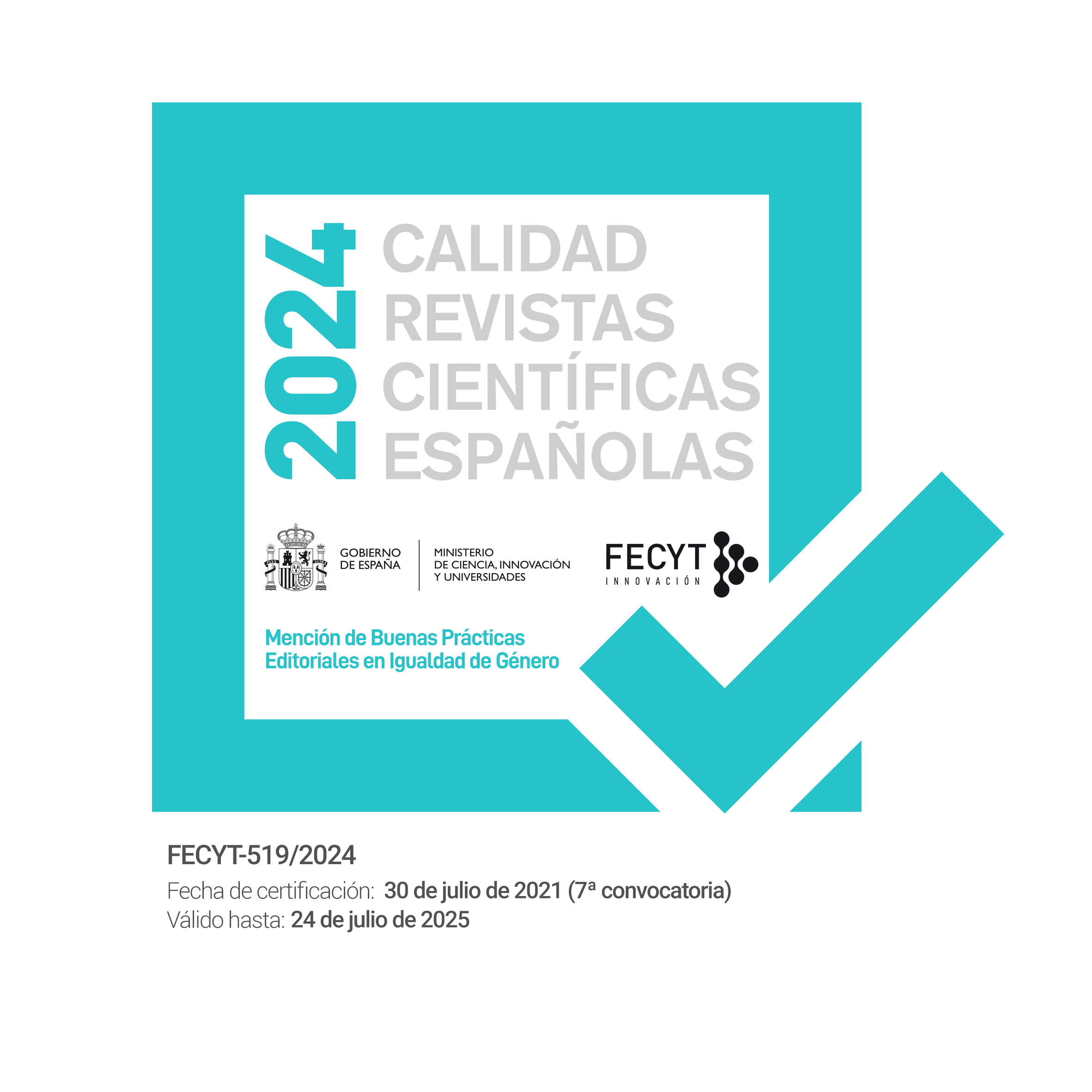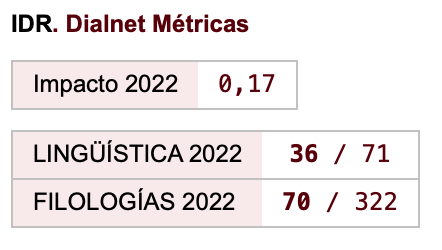Aproximación teórica y práctica a un curso de EFE de farmacia
Keywords:
Spanish for specific purposes (SSP), Education for teachers of SSP, learning materials for SSP for Pharmacists, Example of unit for SSP for Pharmacists, second or foreign language teaching and learningAbstract
In this work we make a suggestion for the development of a Spanish language course for pharmacists or students of Pharmacy whose first language is not Spanish. With the objective of supporting teachers in this demanding task, we provide some guidelines for planning and developing the course, as well as some ideas on how to classify didactic resources. The analysis of the learners’ needs is the starting point and once they, along with the learners’ expectations, have been established, it is possible to select the most appropriate learning materials. We also propose a collaborative role between teacher and learners which involves them actively in the complex process of language acquisition. The practical part of this piece is an example of a unit, based on the initial theoretical analysis. This example will ideally be a launch point for future work in this area.
Downloads
References
Bueno Lajusticia, Ma R. (2003). Lenguas para fines específicos en España a través de sus publicaciones (1985-2002). Madrid: Edita Proyectos Córydon.
Cabré, M. T., Gómez de Enterría, J. (2006). Lenguajes de especialidad y enseñanza de lenguas. La simulación global. Madrid: Gredos.
Coyle, D. (1999). Theory and planning for effective classrooms: supporting students in content and language integrated learning contexts. En Mash, J. (Ed.). Learning through a foreign language (pp. 46-62). Londres: CILT.
Hutchinson, T., Waters, A. (1987). English for specific purposes: A learning–centered approach. Cambridge: Cambridge University Press.
Instituto Cervantes (2002). Marco común europeo de referencia para las lenguas: enseñanza, aprendizaje, evaluación. Madrid: MECD-Anaya.
Navés, T. y Muñoz, C. (2000). Usar las lenguas para aprender y aprender a usar las lenguas extranjeras. Una introducción a AICLE para madres, padres y jóvenes. En Marsh, D., & Langé, G. (Eds.). Using languages to learn and learning to use languages (pp. 1-16). Jyväskylä: University of Jyväskylä.
Pavesi, M., Bertocchi, D., Hofmannová, M., Kazianka, M. (2001). La introduccción del AICLE. Insegnare in una Lingua Straniera, Unterrichten durch eine Fremdsprache, Teaching through a foreign language, Enseñar en una lengua extranjera, Enseigner dans une langue vivante. Milan: M.I.U.R., Direzione Regionale Lombardia.
Robinson P. C. (1991). ESP Today: A practitioner’s guide. Hemel Hempstead: Prentice Hall International.
Sanz Sainz, I. & Felices Lago, A. (Eds.) (2004). Las nuevas tendencias de las len- guas de especialidad en un contexto internacional y multicultural. Granada: Editorial Universidad de Granada.
Strevens, P. (1988). The learner and teacher of ESP. In Chamberlain, D., & Baumgardner, R. J. (Eds.). ESP in the classroom: Practice and evaluation (pp. 39- 44). Oxford: Modern English Publications.
Velázquez-Bellot, A. (2004). Metodología teórica del proceso de elaboración de un Diseño Curricular para la enseñanza de las lenguas con fines específicos. En redELE, 2. http://www.mec.es/redele/revista2/velazquez.shtml#CUA- DRO
Vidal, V., Cabré, M. T. (2004). La combinatoria léxica en la enseñanza y aprendizaje de lenguas para propósitos específicos. En Las gramáticas y los diccionarios en la enseñanza del español como segunda lengua: deseo y realidad. Sevilla, 22-25 septiembre. ASELE 2004.
Downloads
Published
How to Cite
Issue
Section
License
Authors who publish with this journal agree to the following terms:
- Authors retain copyright and grant the journal right of first publication with the work simultaneously licensed under a Creative Commons Attribution License that allows others to share the work with an acknowledgement of the work's authorship and initial publication in this journal.
- Authors are able to enter into separate, additional contractual arrangements for the non-exclusive distribution of the journal's published version of the work (e.g., post it to an institutional repository or publish it in a book), with an acknowledgement of its initial publication in this journal.
- Authors are permitted and encouraged to post their work online (e.g., in institutional repositories or on their website) prior to and during the submission process, as it can lead to productive exchanges, as well as earlier and greater citation of published work (See The Effect of Open Access).

Revista de Lenguas para fines específicos is licensed under a Creative Commons Reconocimiento-NoComercial-SinObraDerivada 4.0 Internacional License.























